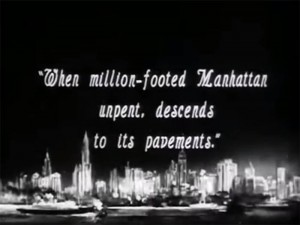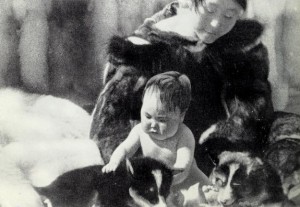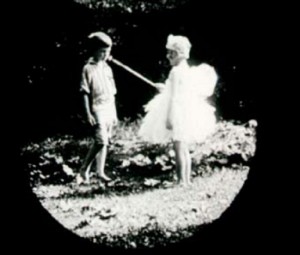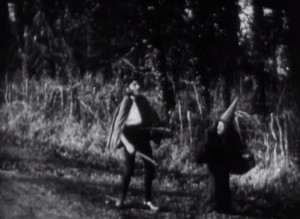"Footage of a day on the fells; the car pulls out of the driveway, followed by scenes of the landscape and family members." (NWFA Online Database)
"Campus Smiles uses a playful tone to document the faculty, student body, and life at UW-Madison during the early 1920s. This documentary short is a compelling chronicle of the local culture at one of the nation’s largest universities and offers a glimpse into the undergraduate sphere of the immediate post-WWI era. In it, humorous intertitles penned in early twentieth-century American slang introduce campus personalities and comment on social events." Archive.org
"A story, typical of the period, which includes - young lovers, a mother with high aspirations for her daughter, a rascally Count and much ‘ado’." (EAFA Database)

"In 1921, Sheeler and Strand collaborated to make Manhatta, considered to be the first American avant-garde film. Inspired by Walt Whitman's poem "Mannahatta," which is quoted in one of the intertitles, the film portrays life in New York City in sixty-five nonnarrative shots. The sequences display one epic day in Lower Manhattan, beginning with a ferry approaching the city in early morning and ending with a sunset view from a skyscraper. Shot from extreme camera angles, the film captures the dynamic qualities of the new metropolis" Museum of Modern Art (New York), Department of Film.

"The filming of "Nanook" was almost an accident. It was not until his third exploration trip into the North in 1913 that Mr. Flaherty packed in his kit the necessary apparatus for making a motion picture of the life of the Eskimo. For a year and a half he lived among them as an engineer and explorer and his admiration for their life, their games, and their struggles, grew on him slowly. He was immersed in enthusiasm. He knew they made fine film stuff. Then, after months of hard work, his precious film was drowned while crossing a rotten ice stream within twelve miles of the journey's end. Undaunted, he made new plans immediately for retaking the picture. His next trip to the North, made especially to take the film, was completely successful. He did away with episodic filming; he built his first camera entity," Amateur Movie Makers, May 1927, 7.
"Amateur film that premiered at the press conference announcing Kodak’s introduction of 16mm." filmpreservation.org

"Alexander Black imagines his grandchildren appearing around him in a swirl of double-exposed trick cinematography." UC Berkeley Library.

"Possibly the first student film ever made, this tale of a magical instrument was shot by the newly formed Cambridge University Kinema Club. While the film is a daft comedy, its creators went on to careers straight from a thriller: director Peter Le Neve Foster spent years filming behind the Iron Curtain, his assistant director Cedric Belfrage was a suspected Russian spy, and Pembroke Stephens - the lovesick youth - was killed in 1937 while reporting on the Japanese invasion of China." (BFI Player)
Total Pages: 299